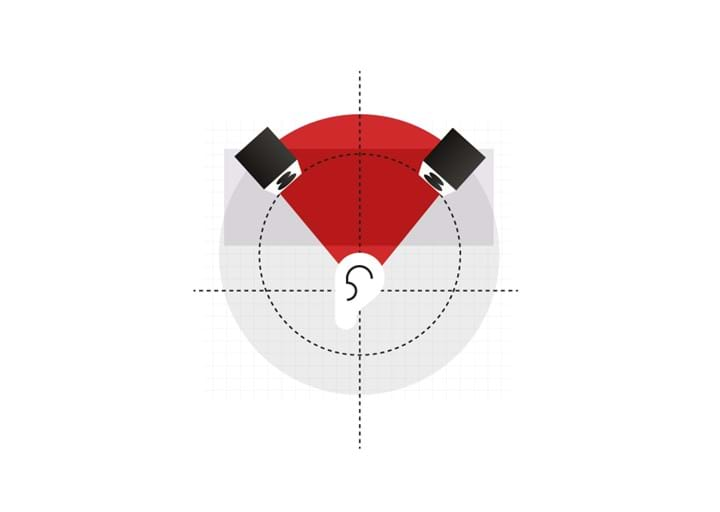Engineer to the rescue
Stephen is one of our Senior Acoustic Engineers, and he has been with Dynaudio for little under a year, but he already has many exciting and important projects under his belt – including our new Personal Reference Monitor, LYD.
I sat down with Stephen to have a conversation about his work at Dynaudio and to get his tips on monitor placement and how to set up a home studio.
UPDATE 29/4-2016
Click here to watch the second episode of Ask the Expert with Stephen Entwistle.
>> Hi Stephen, thanks for taking time out of your schedule to talk to me – and all of us. So, tell me about yourself. How long have you been in the loudspeaker business?
No problem, it’s my pleasure. Well, I have been in the business since I started doing PA work at the age of 8, if we’re talking professionally, it since 2008. But, it has always been an interest of mine. I can’t play an instrument for the life of me, but I can run a mixing board, no problem.
>> What are your main tasks here at Dynaudio?
I look at both the product’s software and hardware and try to pull it all together to deliver the product’s sonic performance. I provide input on driver design; I oversee crossover typologies and technologies - whether it is in the digital or analog domain -; and I look at how it interacts with the design of the cabinet: stitching it all together trying to deliver the best sound performance possible.
One of the best tricks for this - and a cheap one as well - is to have a bookshelf behind you with books that are spaced irregularly. That works extremely well.
Stephen Entwistle,
Figuring out the equilateral triangle
It is pretty easy to find out how big - or small - your equilateral triangle should be: follow these steps, and you are well on your way:
- Get a tape measure.
- Make a circle: you are at the center, and your monitors are at the edge.
- Measure the distance between your speakers.
- With that distance noted, make sure you are placed as far from the monitors, as they are from each other.

Freedom to play with the bass
>> Okay, Stephen. Talk to me about nearfield speaker placement in a studio setting.
Well, bigger studios are often designed for soffit mounted monitors, and many of them, therefore, have a lot of acoustic treatment in place. That’s not so good for the nearfields, as they won’t have the best environment to work in, because of the existing acoustic treatment. Add to that, the mixing desk really restricts where you can place the monitors.

>> How would you then go about ‘placing’ the speakers right?
As I said, you are restricted by the mixing desk, so you’ll have to work with what you’ve got. But, make sure that your monitors are firmly placed, that should keep vibrations to a minimum, and aim for the equilateral triangle when you install them.
The home studio is a much more flexible environment to work with. Here, you can do a lot just because you are free to move your monitors around and test out what works best. Still, you should aim for the equilateral triangle when you install them – we tune the speakers for such a listening position – but you have more freedom to play with the bass response:
- Move them closer to the wall, move them away from the wall.
- When you set up your studio, try the room length- or width-ways.
- Experiment with the height of your monitors
>> We talk about toe-in in the Hi-Fi world, is that also used in studios?
No, it is not actually. Generally, in Hi-Fi, the listening position is a lot more compromised, and people typically listen farther away from the equilateral triangle, and that’s when you start to think about the toe-in; when you listen further away from the speakers.
With toe-in, you are adjusting the direct sound – the sound coming to you directly from the speakers without reflections – with the sound that’s reflected off the walls. It has to do with the power response as opposed to the direct response. The power response dominates over the direct response when you are further away from the speakers.
However, in a nearfield situation, direct response dominates over the power response, which is why the equilateral triangle is much more important than toe-in.
Three tips for the home studio
>> Okay, could you share with me your three top tips for a good home studio setup before we end?
Sure thing, so my three best tips for setting up a home studio … well, that would be these three:
- You need to find a pair of good monitors. They are some of your main tools, and they have to reproduce your mix faithfully, so you can find out where to improve.
- Pick a good interface. There are a lot of them out there, so make sure to avoid the bad ones. When you are mixing, it has to sound good on your studio monitors, but it also has to translate to FM radio and to the guy who has a pair of big speakers in a massive room.
- If you budget allows it, you should look at some room treatment. Here, bass control is important, but you need to ensure you have some diffusion behind you that spreads all the high-frequencies. One of the best tricks for this - and a cheap one as well - is to have a bookshelf behind you with books that are spaced irregularly. That works extremely well. The books also work as an absorber – a fairly poor one – but nonetheless an absorber.
The next episode of Ask the Expert
This is your chance to ask Stephen all of your questions about speaker placement and how to set up a home studio. You can post all of your questions on our Facebook post, and we will release the video with all of Stephen's answers 2 May 2016 on Facebook and YouTube. So, make sure to connect with us on Facebook and subscribe to our YouTube channel.
UPDATE 29/4-2016
Click here to watch the second episode of Ask the Expert with Stephen Entwistle.
Sign up to get more great articles
Nothing compares to the satisfaction of knowing – for a fact – that something is as good as it gets





